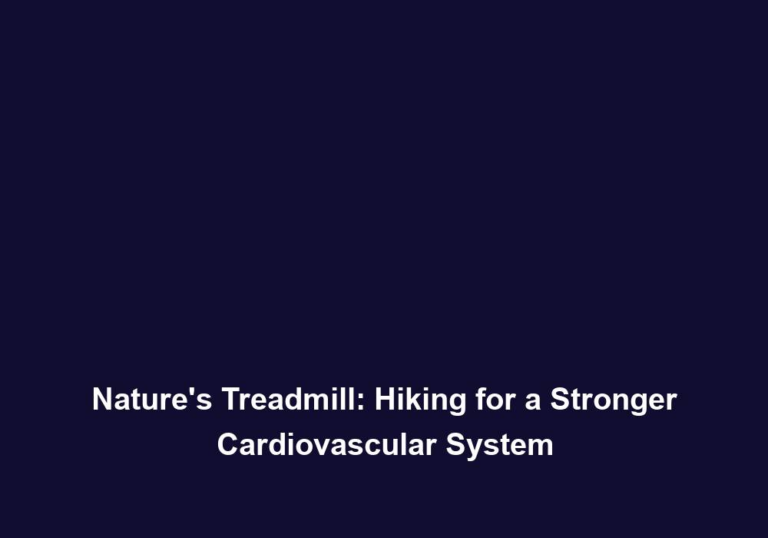Saddle Up for Health: Cycling Trends Across Europe
Cycling has become an increasingly popular mode of transportation and a favorite recreational activity across Europe. With its numerous health benefits and positive impact on the environment, cycling has become a trend that is here to stay. In this article, we will explore the current cycling trends across Europe and delve into the reasons behind its popularity.
Overview of Cycling Trends
Cycling has gained significant momentum across Europe in recent years. The rise in cycling can be attributed to various factors such as increased awareness of environmental issues, improved cycling infrastructure, and the promotion of active and healthy lifestyles. Let’s take a closer look at some of the cycling trends in different European countries:
Netherlands: The Cycling Capital
When it comes to cycling, the Netherlands is renowned as the cycling capital of Europe. Dutch cities such as Amsterdam and Utrecht have a well-developed cycling infrastructure, making it safe and convenient for cyclists. The Netherlands has an extensive network of dedicated bike lanes, separate traffic signals for cyclists, and secure bike parking facilities. Cycling is deeply ingrained in the Dutch culture, with a significant percentage of the population using bicycles as their primary mode of transportation.
In addition to the infrastructure, the Netherlands also has a cycling-friendly legal framework and policies that prioritize cyclist safety. The country has implemented strict liability laws, which means that in the event of an accident involving a cyclist and a motor vehicle, the driver is presumed to be at fault unless proven otherwise. This legal protection has further encouraged cycling and contributed to its popularity in the Netherlands.
Denmark: A Nation on Two Wheels
Denmark is another European country that has embraced cycling on a large scale. Cities like Copenhagen have invested heavily in cycling infrastructure, including dedicated bike lanes, bike-friendly bridges, and ample bike parking facilities. The Danish government actively promotes cycling as a sustainable mode of transportation and encourages citizens to adopt this eco-friendly lifestyle.
One of the key factors contributing to the success of cycling in Denmark is the integration of cycling with other modes of transportation. For example, many train stations in Denmark are equipped with bike parking facilities, allowing cyclists to easily combine cycling with public transportation for longer journeys. This seamless integration makes cycling a convenient and attractive option for commuting and leisure activities.
Germany: The Bicycle Revolution
Germany has experienced a significant surge in cycling popularity in recent years, with cities like Berlin and Munich leading the way. The country has made substantial investments in cycling infrastructure, including expanding the network of bike lanes, improving bike parking facilities, and implementing bike-sharing programs. Recognizing the health and environmental benefits of cycling, the German government has been actively promoting cycling as an alternative to cars.
In addition to infrastructure improvements, Germany has also introduced policies and initiatives to encourage cycling. For example, some cities offer financial incentives, such as tax benefits or subsidies, to individuals who purchase bicycles or e-bikes. Moreover, the German government has launched campaigns to raise awareness about cycling safety and the benefits of active transportation. These combined efforts have contributed to the growing popularity of cycling in Germany.
United Kingdom: Embracing the Cycling Culture
The United Kingdom has witnessed a growing cycling culture, particularly in cities like London and Cambridge. The government has made efforts to encourage cycling through initiatives such as the Cycle to Work Scheme, which provides tax incentives to individuals who cycle to work. The introduction of cycle superhighways and bike-sharing schemes has further contributed to the popularity of cycling in the UK.
The UK has also seen improvements in cycling infrastructure, with the creation of dedicated bike lanes and the implementation of traffic-calming measures in urban areas. Additionally, there has been a shift in public perception towards cycling, with more people recognizing its health and environmental benefits. The growing popularity of cycling events, such as charity rides and cycling festivals, has also played a role in promoting cycling as a recreational activity.
Health Benefits of Cycling
Cycling offers numerous health benefits that make it a preferred form of exercise for many individuals. Here are some of the key health benefits associated with cycling:
-
Cardiovascular Fitness: Regular cycling helps improve cardiovascular fitness by increasing heart rate and promoting better blood circulation. This, in turn, reduces the risk of heart diseases and strengthens the heart muscles. Cycling also helps lower blood pressure and improve cholesterol levels, further improving heart health.
-
Weight Management: Cycling is an excellent way to burn calories and maintain a healthy weight. It is a low-impact exercise that can be enjoyed by people of all ages and fitness levels. Cycling at a moderate intensity can help burn approximately 300-500 calories per hour, depending on factors such as weight and terrain.
-
Muscle Strength and Tone: Cycling primarily engages the leg muscles, including the quadriceps, hamstrings, and calves. Regular cycling can help strengthen and tone these muscles, resulting in improved overall strength and endurance. It also activates the core muscles, contributing to better posture and stability.
-
Mental Well-being: Cycling is not just beneficial for physical health but also has positive effects on mental well-being. It has been found to reduce stress, anxiety, and depression, while promoting a sense of happiness and well-being. Cycling outdoors in nature can provide a meditative experience, helping to clear the mind and improve mental clarity.
-
Joint Mobility: Cycling is a low-impact exercise that puts minimal stress on the joints, making it suitable for individuals with joint conditions or those recovering from injuries. It helps improve joint mobility and flexibility, reducing the risk of joint stiffness and pain.
-
Improved Immune System: Regular exercise, such as cycling, boosts the immune system and helps the body fight off infections and diseases. Cycling stimulates the production of antibodies and immune cells, enhancing overall immune function.
Tips for Safe Cycling
While cycling offers a multitude of benefits, it is essential to prioritize safety when hitting the road. Here are some tips to ensure a safe and enjoyable cycling experience:
-
Wear Protective Gear: Always wear a properly fitting helmet and high-visibility clothing to enhance your safety and visibility on the road. Helmets protect your head in the event of a fall or collision, while high-visibility clothing makes you more visible to other road users.
-
Follow Traffic Rules: Obey traffic signals, signs, and lane markings. Be sure to signal your intentions to other road users, such as turning or stopping. Respect the right of way of pedestrians and other cyclists.
-
Be Aware of Surroundings: Stay alert and aware of your surroundings at all times. Scan the road for potential hazards, such as potholes, parked cars, or opening doors. Anticipate the actions of other road users and be prepared to react accordingly.
-
Maintain Your Bicycle: Regularly inspect your bike for any mechanical issues, such as loose brakes or flat tires. Keep your bike well-maintained to ensure a safe and smooth ride. Check the tire pressure, brakes, and gears before each ride.
-
Stay Visible: Use front and rear lights, especially when cycling during low-light conditions or at night. Wearing reflective clothing and accessories can also enhance your visibility. Make sure your lights are in working order and wear reflective gear to make yourself more visible to other road users.
-
Plan Your Route: Plan your cycling route in advance, taking into consideration factors such as road conditions, traffic volume, and bike-friendly infrastructure. Choose routes that have dedicated bike lanes or low-traffic roads whenever possible.
-
Stay Hydrated and Fuelled: Drink plenty of water before, during, and after your ride to stay hydrated. Carry snacks or energy bars to fuel your body during longer rides. Stay nourished to maintain your energy levels and prevent fatigue.
Conclusion
Cycling has become a popular trend across Europe, with countries like the Netherlands, Denmark, Germany, and the United Kingdom leading the way. The health benefits of cycling, coupled with improved cycling infrastructure and governmental support, have contributed to its ever-growing popularity. Whether it’s for commuting or leisure, hopping on a bicycle can not only benefit your health but also contribute to a greener and more sustainable future. So, saddle up, and enjoy the countless benefits of cycling!







